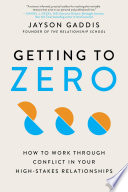

The book introduces the concept of zero-based thinking, which encourages individuals and organizations to start from a blank slate when evaluating their goals, processes, and strategies. This approach allows for a fresh perspective, free from the constraints of past decisions or inherited practices. By reassessing what is truly necessary and valuable, teams can identify inefficiencies and eliminate unnecessary complexities. This idea emphasizes the importance of questioning the status quo and being willing to discard outdated practices in favor of innovative solutions.
Continue readingA significant theme in 'Getting to Zero' is the need for sustainability in business practices. The book argues that organizations must strive for a 'zero impact' model, where their operations do not harm the environment. This involves rethinking supply chains, production processes, and resource management to minimize waste and carbon footprints. The author provides examples of companies that have successfully implemented sustainable practices, demonstrating that profitability and environmental responsibility can coexist. The idea is that achieving zero environmental impact is not just a moral imperative but also a competitive advantage in a market increasingly driven by consumer demand for sustainability.
Continue readingThe book stresses the importance of agility in business operations, particularly in an era marked by rapid technological advancements and shifting market dynamics. Organizations must be able to pivot quickly in response to changes, whether that be consumer preferences or technological disruptions. 'Getting to Zero' provides strategies for fostering a culture of agility, including empowering teams to make decisions and encouraging cross-functional collaboration. The idea is that businesses that can adapt swiftly will not only survive but thrive in the face of uncertainty.
Continue readingIn an age where data is abundant, 'Getting to Zero' advocates for a data-driven approach to decision-making. The author argues that organizations should leverage analytics to inform their strategies and operations. This involves collecting relevant data, analyzing it for insights, and using those insights to guide actions. The book discusses various tools and methodologies for effective data analysis and emphasizes the importance of a culture that values evidence over intuition. The idea is that informed decisions lead to better outcomes, ultimately driving organizations closer to their zero-impact goals.
Continue readingThe book highlights the critical role of collaboration and team dynamics in achieving organizational goals. It argues that fostering a collaborative environment where diverse perspectives are valued leads to more innovative solutions and better problem-solving. 'Getting to Zero' provides practical advice on building effective teams, including establishing clear communication channels, defining roles and responsibilities, and promoting a culture of trust. The idea is that strong teamwork is essential for navigating the complexities of modern business and achieving ambitious objectives.
Continue readingAnother key idea in 'Getting to Zero' is the emphasis on customer-centric innovation. The author posits that understanding customer needs and preferences is paramount for developing products and services that resonate with the market. This requires organizations to engage with their customers actively, gather feedback, and iterate on their offerings based on real-world insights. The book provides case studies of companies that have successfully implemented customer-centric strategies, illustrating how this approach can lead to increased loyalty and market share. The idea is that by prioritizing the customer experience, organizations can drive sustainable growth.
Continue readingThe final main idea presented in 'Getting to Zero' is the importance of having a long-term vision and strategic planning. The author argues that organizations should not only focus on short-term gains but also consider their long-term impact on society and the environment. This involves setting ambitious goals that align with a sustainable future and developing strategic plans to achieve them. The book emphasizes the need for leadership commitment to these long-term objectives and provides frameworks for effective strategic planning. The idea is that a clear vision and roadmap are essential for guiding organizations toward their zero-impact aspirations.
Continue reading